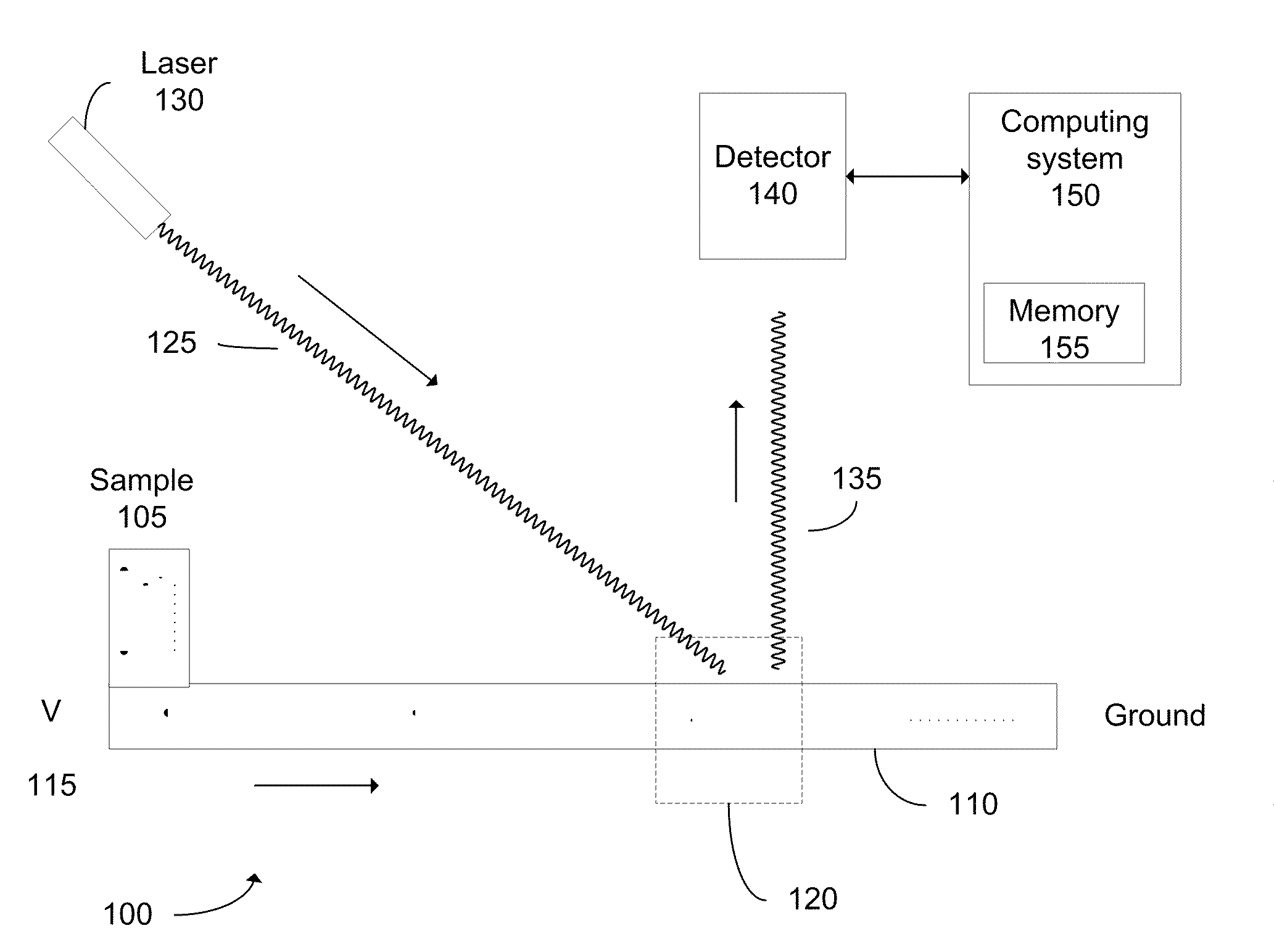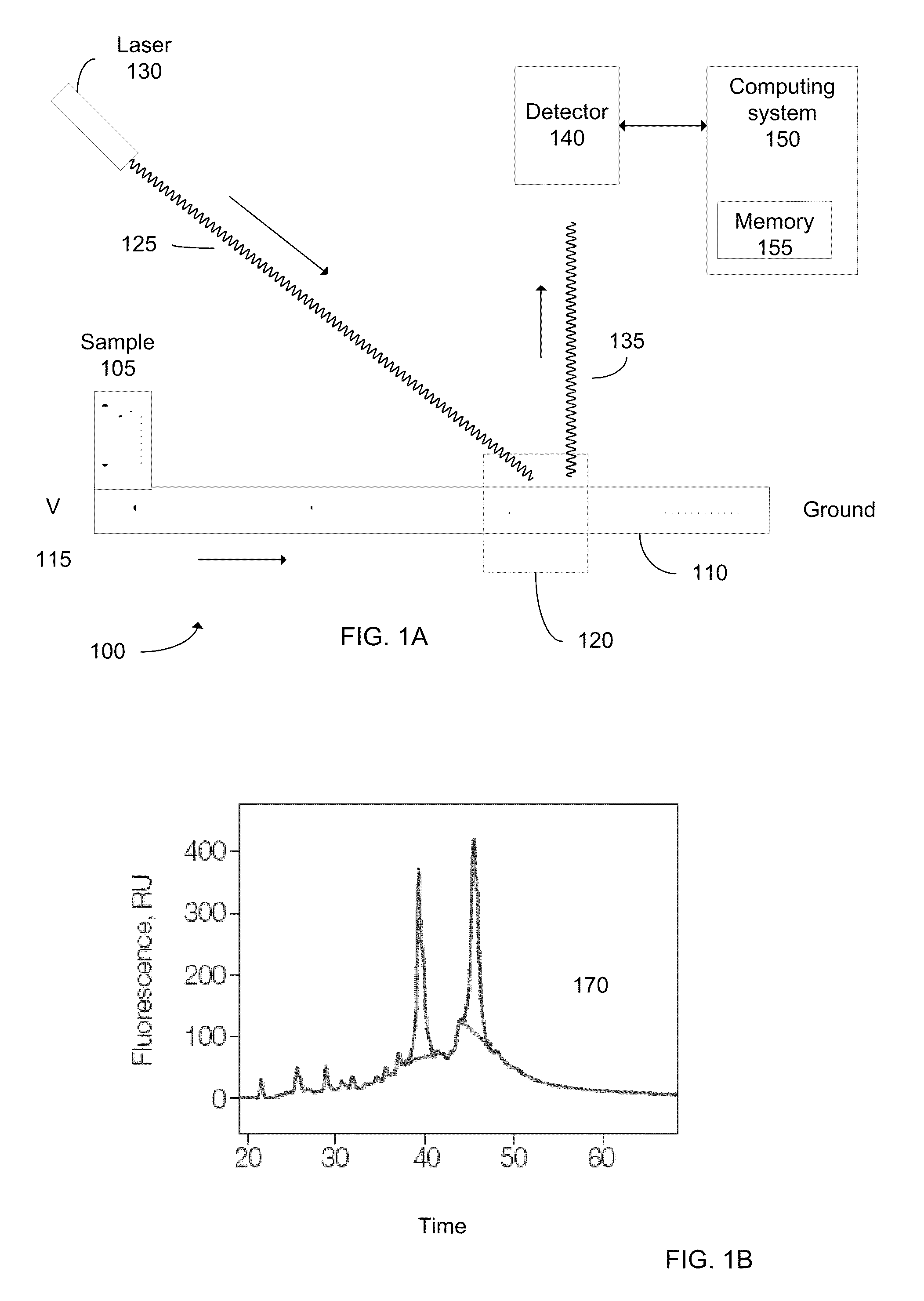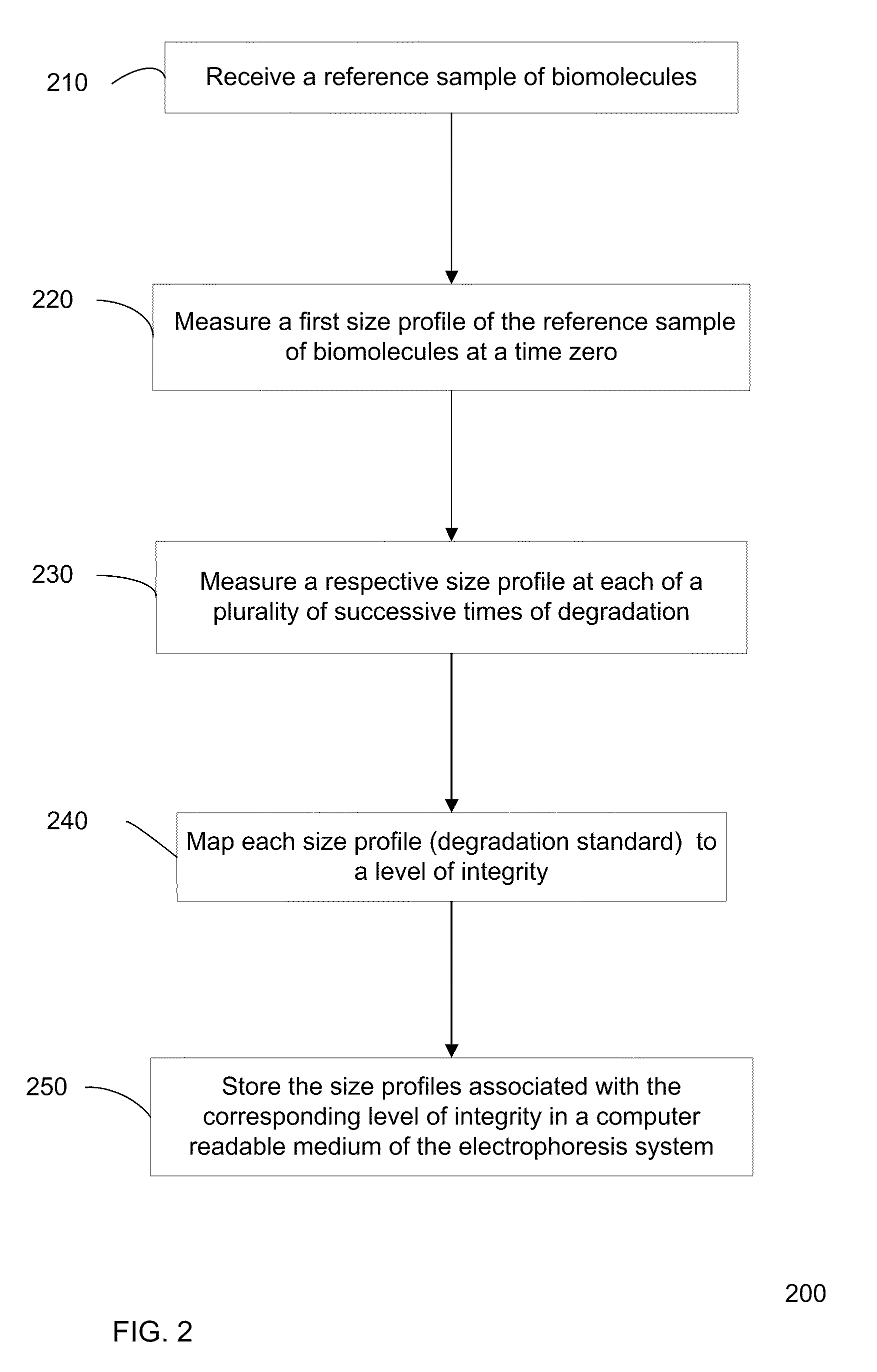Determination of the integrity of RNA
a technology of integrity and rna, applied in the field of determining can solve the problems of inability to accurately and objectively evaluate the integrity of rna molecules, limited methods, and time-consuming, labor-intensive and costly projects, and achieve high accuracy, reproducibility, and efficiency. the effect of ensuring the accuracy of a tes
- Summary
- Abstract
- Description
- Claims
- Application Information
AI Technical Summary
Benefits of technology
Problems solved by technology
Method used
Image
Examples
examples
[0106]The following examples are offered to illustrate, but not to limit the claimed invention.
I. Reproducibility
[0107]Interchip reproducibility of RQI values was evaluated by analyzing a mouse brain total RNA sample (Ambion) at 250 ng / jJl on six different chips with 12 samples per chip (n=72). The RQI values returned ranged between 8.7 and 9.7 with a mean RQI value of 9.4 and a percent coefficient of variation (% CV) of 3.5%. Reproducibility of RQI measurements on a less intact sample of rat liver RNA run at two different concentrations, 100 ng / jJl and 2 ng / jJl, showed a high reproducibility across 12 and 11 runs using the Experion RNA 8td8ens and High8ens analysis chips, respectively. All RQI values fell into a tight range with a low standard deviation, as shown in Table 1 of FIG. 9A. Together, these data show that RQI values are very reproducible.
II. Effect Of Concentration
[0108]The effect of RNA concentration on RQI precision was determined by analyzing RNA samples with differen...
PUM
| Property | Measurement | Unit |
|---|---|---|
| concentration | aaaaa | aaaaa |
| temperature | aaaaa | aaaaa |
| temperature | aaaaa | aaaaa |
Abstract
Description
Claims
Application Information
 Login to View More
Login to View More - R&D
- Intellectual Property
- Life Sciences
- Materials
- Tech Scout
- Unparalleled Data Quality
- Higher Quality Content
- 60% Fewer Hallucinations
Browse by: Latest US Patents, China's latest patents, Technical Efficacy Thesaurus, Application Domain, Technology Topic, Popular Technical Reports.
© 2025 PatSnap. All rights reserved.Legal|Privacy policy|Modern Slavery Act Transparency Statement|Sitemap|About US| Contact US: help@patsnap.com



